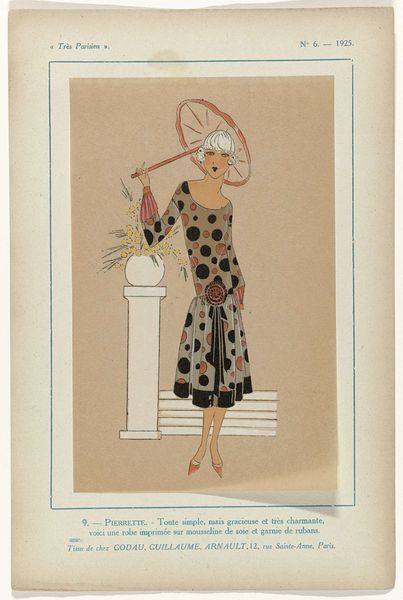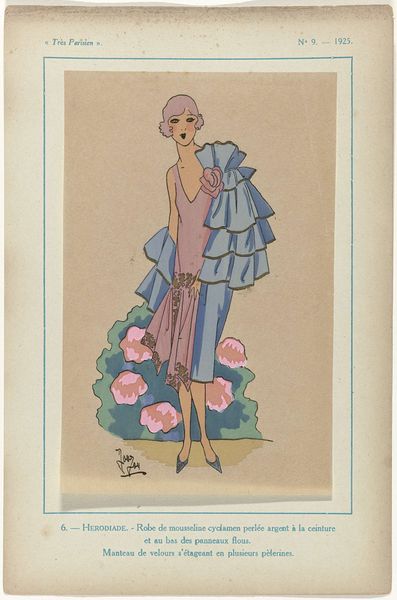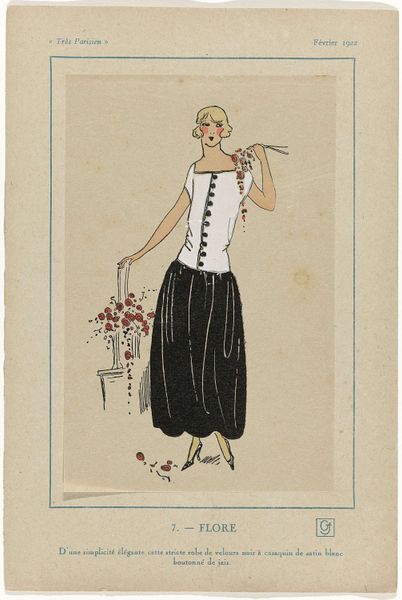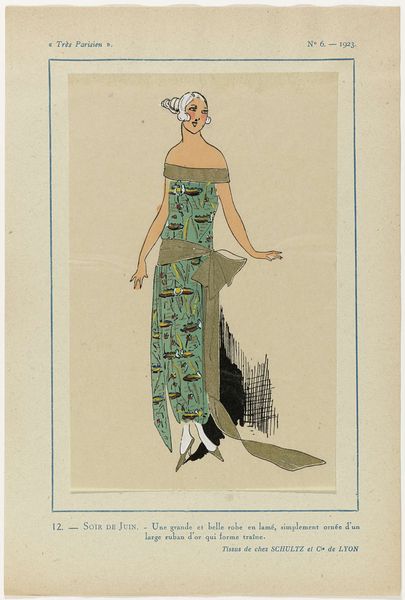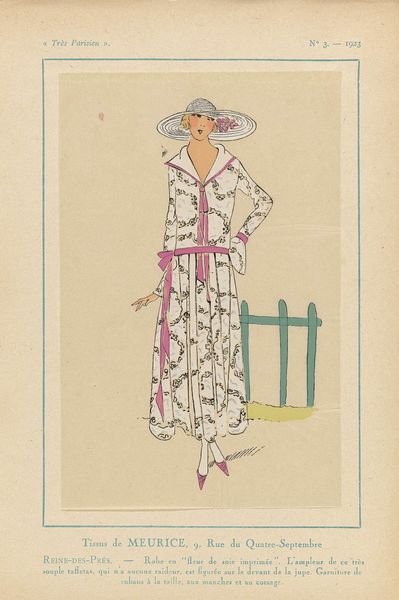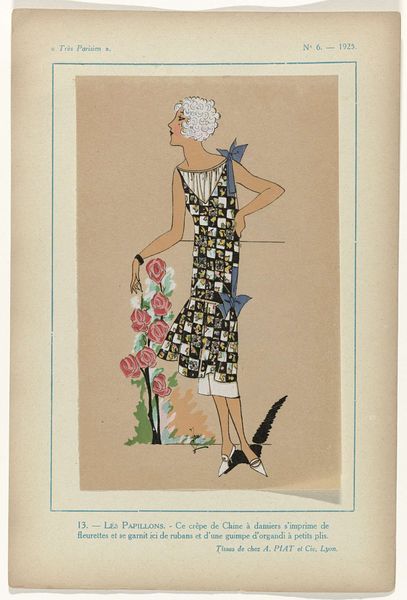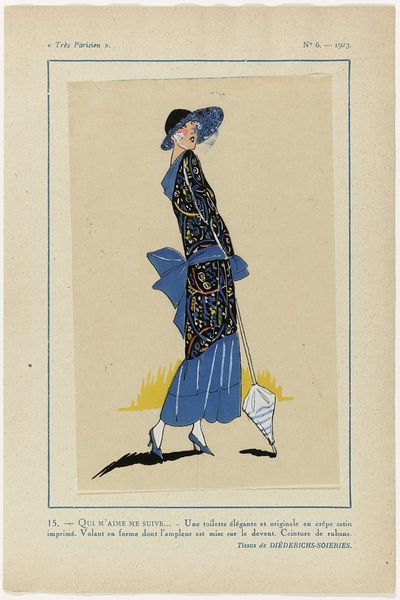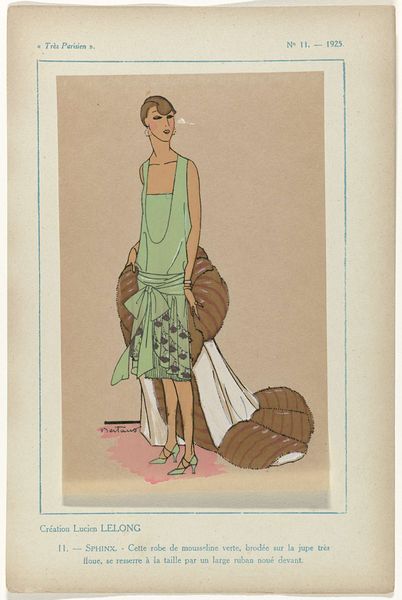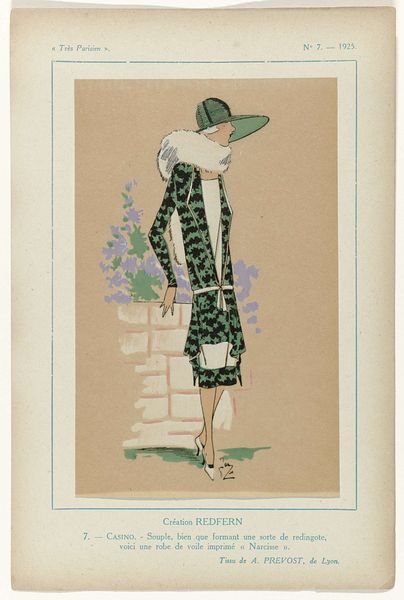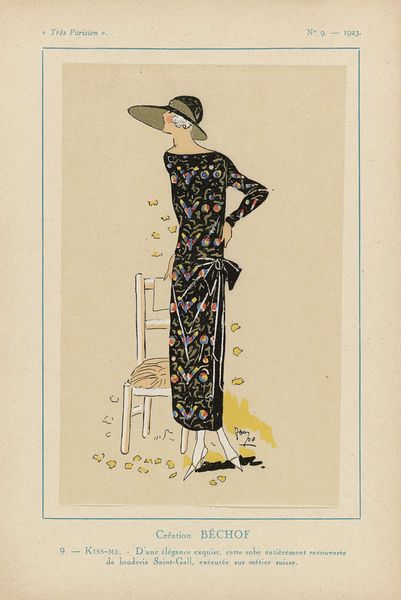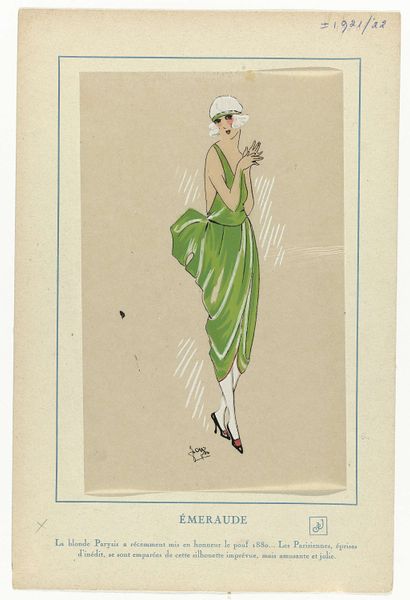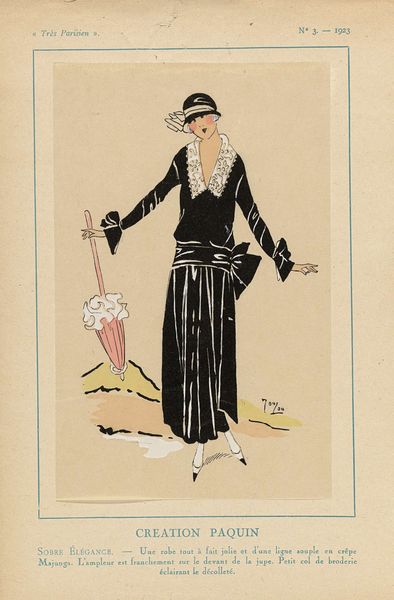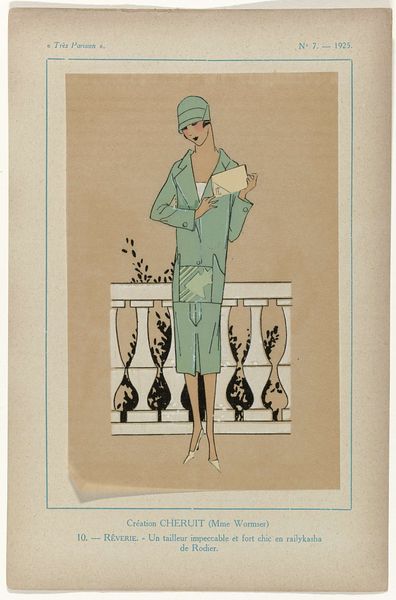
Très Parisien, 1925, No. 6, Pl. 15: Création Lucien LELONG. FLEUR DE PECHER 1925
0:00
0:00
graphic-art, painting, watercolor
#
art-deco
#
graphic-art
#
painting
#
watercolor
Dimensions: height 195 mm, width 120 mm, mm
Copyright: Rijks Museum: Open Domain
Editor: Here we have “Trés Parisien, 1925, No. 6, Pl. 15: Création Lucien LELONG. FLEUR DE PECHER” by G-P. Joumard, from 1925. It seems to be a watercolor and painting on graphic art paper. The colour palette is beautiful; a soft beige contrasting with the blue dress... It's got such a classic, vintage feel! What stands out to you when you look at this? Curator: What strikes me is the layering of materials and processes here. Joumard presents us with an image of haute couture, meticulously rendered, but it's an image reproduced in a magazine, democratizing access to these exclusive designs. The labour involved is interesting: the artisan skill of the original dressmaking contrasted with the mass production of the magazine itself. Editor: That's a great point! I hadn't considered the mass production element. So the magazine creates this sense of exclusivity while being accessible to many, interesting! The materiality also draws attention to social context... Curator: Exactly! The popeline fabric, described in the text, was a desirable material for its drape and sheen, reflecting the aspirational culture of the 1920s. But how was it made? Who were the labourers? The availability of synthetic dyes allowed for the vibrant blue, impacting production… Editor: Wow, I hadn’t thought about the dyes! Curator: Consider too, how the watercolor mimics the delicate texture of the fabric. There’s a tension between representation and reality. Do you think it effectively conveys the desired luxurious image of the dress? Editor: It definitely highlights the elegance and craftsmanship! This perspective is an amazing reminder that an artwork like this is more than just an image; it embodies a whole web of production, consumption, and labour practices! Curator: Precisely! It really forces us to rethink traditional definitions of ‘high art’ and consider the socio-economic forces that shaped its creation and reception. Editor: Thank you! I’ll definitely look at artworks in a new, material-focused way from now on!
Comments
No comments
Be the first to comment and join the conversation on the ultimate creative platform.

